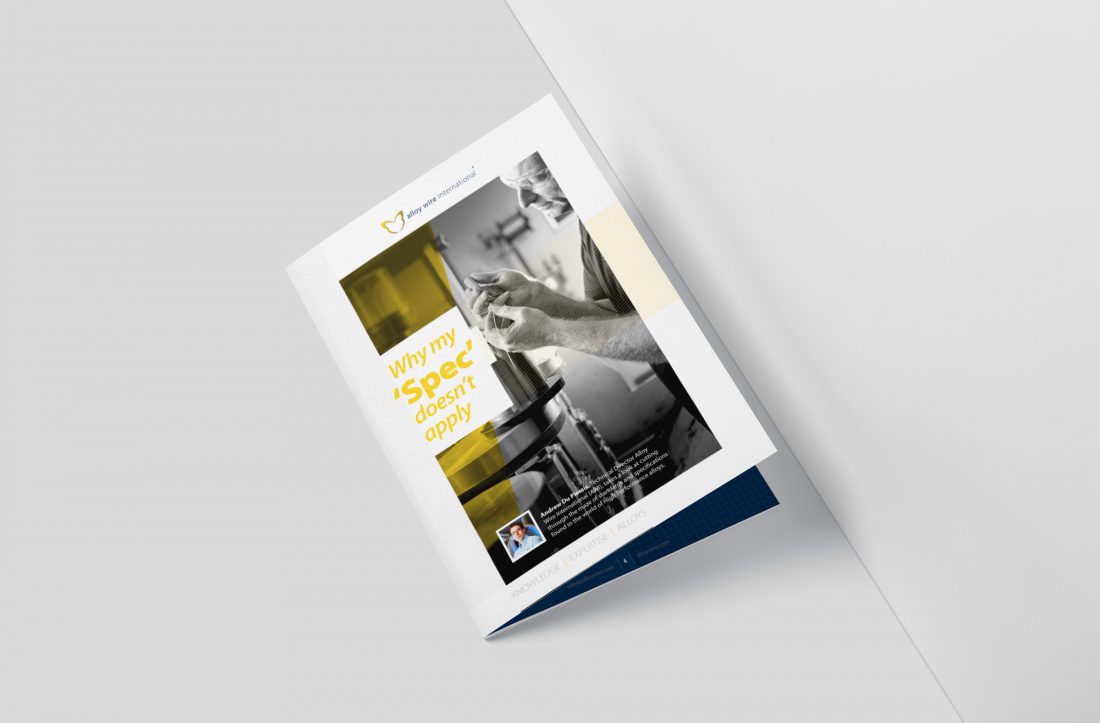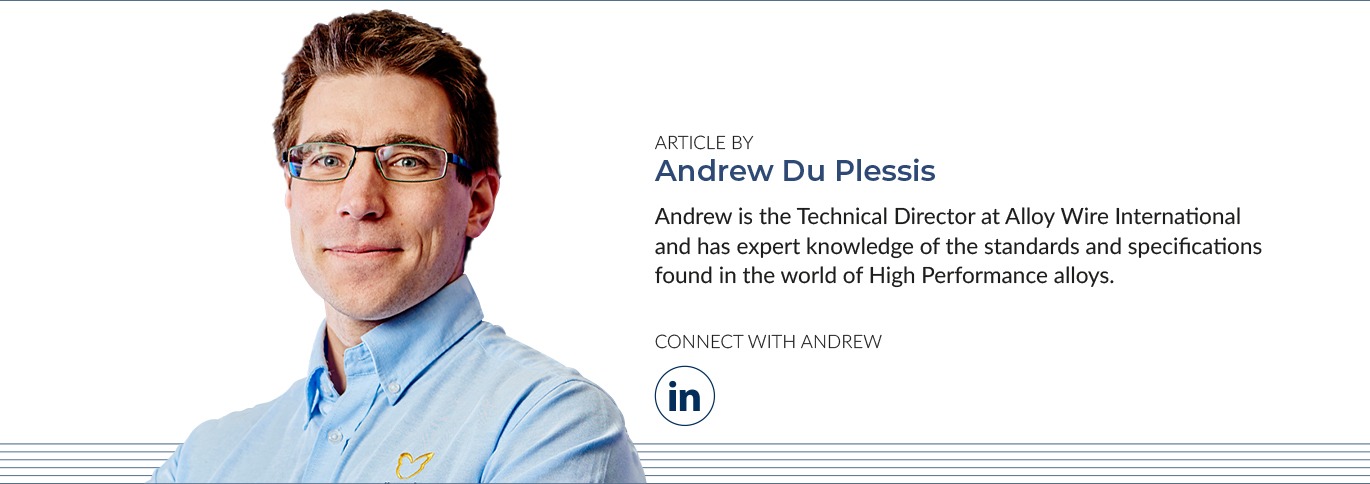
Why My ‘Spec’ Doesn’t Apply
Why My ‘Spec’ Doesn’t Apply
There are a large number of specifications and standards available to choose from when ordering a product in High Performance alloys. The difficult job is understanding which is the correct one for your application. This is especially true for wire supplied into the spring industry, as many of the commonly used standards are not written specifically for spring applications.
An Internet search of an alloy for a spring application can generate any number of standards, which relate to the material, but not the actual application. For example, a specification written for bars in diameters up to 2″ (50.80 mm) in straight lengths or for sheet and plate is not easily applied to small diameter wire for springs. One specification that does cover wire specifically for spring applications is AMS 5699G. However, this is a rarity and not the norm.
We often find that sections of the specifications have to be excluded or tailored to the requirements of cold drawn or annealed spring wire supplied in coil or on spools. Generally, most standards make an allowance for the customer and manufacturer to come to an agreement prior to an order being placed, identifying where the material may fall outside the specific requirements listed.
A good example of this is ASTM B574, which covers a range of corrosion resistant materials supplied in bar or rod between ¼” (6.350 mm) and 3 ½” (88.90 mm) in the solution annealed or slightly cold worked condition. As many customers look to order this for spring applications in either round or flat wire, it is necessary to pick and choose the applicable sections to allow for partial certification.
For instance, with cold drawn wire in coil, it may be necessary to exclude all clauses except for the chemical composition of the alloy.
Another commonly requested standard that is applicable to spring wire, but does not cover wire in coils, is AMS 5833. This standard covers cold drawn wire in straight lengths up to 0.140″ (3.56 mm) in diameter. In order to comply, certain sections of the specification again must be excluded. For example, Clause 1.1 (Scope), should be either amended or excluded when material required is larger than 0.140″ (3.560 mm) diameter. If the wire is required in coils rather than in straight lengths, then both Clauses 1.1 and 5.1 should be amended or excluded by mutual agreement.
This particular specification raises another interesting issue of trade names, which is often encountered in the specialty alloys world. A trade name can be placed on a specific grade of material (by the mill, which melts it), which many people then commonly associate with a specification—let’s say AMS 5833, this would be Elgiloy.
Material from another mill/melt source also fully complies with requirements of this standard, but goes by a different trade name. One example of an alternative trade name for this grade of material is Phynox. The only difference is in the name. In terms of their chemical makeup and mechanical properties that can be achieved, they are exactly the same.
Other specifications which are becoming increasingly popular in the world of High Performance alloys are the NACE series for material selection in the oil and gas industry.
ANSI/NACE MR0175/ISO15156-3 is the standard that we see most commonly requested. It covers alloys for sour gas applications.
A large number of alloys are covered, most listed for shafts, pins or even ‘any equipment or component’, but only four alloys are specifically listed for spring applications. These are Alloy X-750, Elgiloy/Phynox, MP35N and Alloy 90.
For these alloys intended specifically for use in spring applications, the specification covers chemical analysis and required mechanical properties. For each of the four alloys, the required mechanical properties are to be met after heat treatment of the finished part or component.
A quick summary of what might be a typical offering to supply material compliant to this specification can be seen in the table below:
| Alloy (UNS No) | Table in ANSI/NACE MR0175/ISO15156-3 | Hardness (HRc) | Condition of Supply | Heat Treatment | |
| Chemistry | Hardness | ||||
| X-750 (UNS N07750) | D.9 | A.36 | <50 | No 1 Temper | +730°C – 16 Hrs – A/C +1350°F – 16 Hrs – A/C |
| Spring Temper | +650°C – 4 Hrs – A/C +1200°F – 4 Hrs – A/C | ||||
| 90 (UNS N07090) | D.9 | A.36 | <50 | Spring Temper | +650°C – 4 Hrs – A/C +1200°F – 4 Hrs – A/C |
| Phynox/Elgiloy (UNS R30003 UNS R30008) | D.10 | A.39 | <60 | Spring Temper | +520°C – 5 Hrs – A/C +970°F – 5 Hrs – A/C |
| MP35N (UNS R30035) | D.10 | A.39 | <55 | Spring Temper | +650°C – 4 Hrs – A/C +1200°F – 4 Hrs – A/C |
In our experience, it is beneficial to the customer when we can produce an individually tailored specification for the particular product, which draws on the relevant sections of the international standards and the customer-specific requirements for that product. Although this may appear time-consuming initially, it often ends up saving time in the long run as material can be ordered time and time again to this tailored specification.
For further information, please follow Alloy Wire International on LinkedIn.

Get your digital copy of Why My ‘Spec’ Doesn’t Apply
Fill in the form below to receive your digital copy of the Why my ‘Spec’ Doesn’t Apply article.


